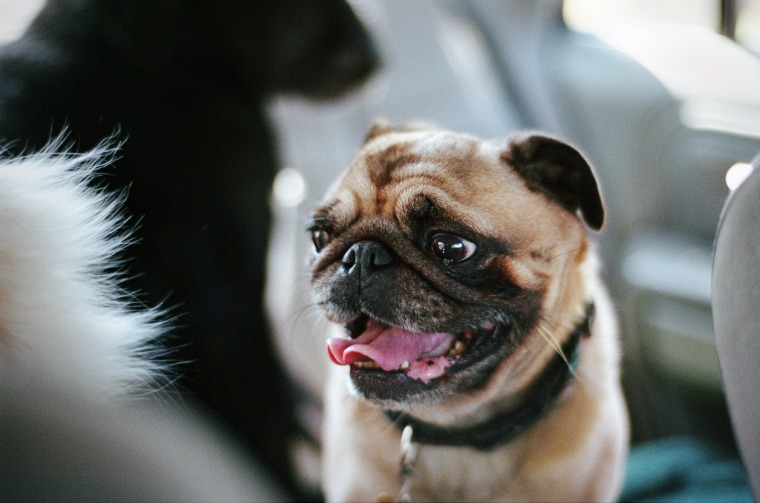As the days grow hotter, some dog owners may need to take extra precautions to protect their pets from potentially fatal heatstrokes, a study published Thursday suggests.
British researchers determined that certain breeds, as well as those that are older and/or overweight, may be more likely to suffer from the heat-related illness than others. In general, most at risk are dogs that weigh more than 110 pounds, and also breeds with flat faces — such as pugs and French bulldogs — according to the study in Scientific Reports.
The breeds identified at highest risk of heatstroke were:
- Chow chow
- Bulldog
- French bulldog
- Dogue de Bordeaux
- Greyhound
- Cavalier King Charles spaniel
- Pug
- Golden retriever
- Springer spaniel
Chow chows, for example, were 16 times more likely to develop heat stroke compared to Labradors.
“I would recommend all dog owners consider if your pet is at increased risk of heatstroke,” said Emily Hall, the lead author and a senior lecturer in veterinary nursing science at Nottingham Trent University in the United Kingdom. “Are they overweight? Are they a giant breed? Are they elderly? Are they one of the breeds identified as having a higher risk?”
If your dog is at higher risk, you should know the signs of overheating, she said in an email. That way “you can act promptly in an emergency [and also] really take care in warm weather to avoid putting any dog at risk of this potentially fatal condition.”
Signs that a dog is overheating include excessive panting, vomiting, excessive drooling, bloody diarrhea and if it collapses, said Dr. Kenneth Drobatz, a professor and the chief of the section of critical care in the department of clinical sciences and advanced medicine at the University of Pennsylvania School of Veterinary Medicine. Drobatz was not involved with the new research.
To take a closer look at the risk of heatstroke, Hall and her colleagues scoured records from veterinary care practices in the U.K. Out of a total of 905,543 dogs, 395 had confirmed heat-related illness events and 56 died.
Flat-faced breeds, such as bulldogs, are especially vulnerable because their breathing is compromised by the shape of their skulls, Hall explained.
“Dogs use panting to cool down, which works by passing air over the nasal passages allowing evaporative heat loss,” she said. “Dogs with shorter muzzles (brachycephalic breeds) have less area to allow heat loss.”
These dogs also tend to have narrowed airways, which means the dog has to work harder to pant, she said.
Prevention is key
Dog owners should pay careful attention on hot, humid days, because dogs will keep going even as they are overheating, Drobatz said. “They will keep exercising till they drop.”
“Prevention is more important than anything else,” he said. “You need to recognize these dogs are at risk and should not go out in a hot humid environment.”
Sometimes dogs get into trouble because of their enthusiasm for play, said Dr. Daniel Fletcher, an associate professor of emergency and critical care at the Cornell University College of Veterinary Medicine.
“The ones with excited, active personalities will just go and chase the ball and chase the ball and chase the ball,” he said. “You don’t realize they are in trouble till it’s too late. They’re a little too good to us, to their own detriment sometimes.”
Dogs that are panting excessively should be taken to a cool area and ideally doused with water at room temperature, Fletcher said.
“If the dog is not back to normal breathing in 15 minutes it’s a good idea to get the dog to a vet,” he added. “If the dog’s temperature goes above 107 or 108, you can get damage to the organs and the dog’s ability to make blood clots.”
Even if the dog appears to have returned to normal, the owner should be watchful, Fletcher said. “Sometimes they may initially seem to go back to normal, but in a couple of hours or a day the dog might develop kidney failure or respiratory or heart issues,” he said.
Owners should be aware of signs including “lethargy, vomiting, diarrhea, blood in the stool, dark stool, or bruising or pinpoint red spots seen on the skin," Fletcher said, adding that these symptoms necessitate a trip to an emergency vet.
Follow NBC HEALTH on Twitter & Facebook.

